Do you have an amazing idea for a story, but no clue how to begin? Or perhaps you’ve written the first chapter but now you’re struggling with what comes next. The problem may be writer’s block, but it’s more likely you simply need a guide. If so, the Three Story method might be just the ticket.
What is the Three Story Method?
The Three Story Method is a proven plotting system developed by publishing veterans and bestselling authors Zach Bohannon and J Thorn. It focuses on the three core components of all stories: conflict, choice, and consequence. It’s an easy to follow, layered approach to building a fantastic story from the ground up.
Who is the Three Story Method for?
This method can be used for pretty much any writer or genre, but if you thrive on structure and organization you’re sure to benefit from it.
The Three Story Method is especially suited to longer, complex novels such as fantasy or science fiction where there are lots of characters and subplots to keep track of.
Plot Points of the Three Story Method
The Three Story Method is based on the familiar three act story structure, but it’s broken down into twelve different plot points.
Each of these points consist of either a conflict, choice, consequence, or obstacle. Let’s take a closer look at what type of story material each point should contain. Then, we’ll put it into practice using the classic film Star Wars.
Act 1
Conflict: This is the thing that yanks the protagonist out of their ordinary life. It’s often referred to as the “inciting incident” but “conflict” is more specific.
Whatever event you choose to disrupt your character’s norm doesn’t have to be a life-or-death situation, or even dramatic, but it does have to be significant enough to force your main character into taking action.
Example: Luke buys the droids R2-D2 and C-P30 from the Jawa traders. This seemingly simple action is what launches the story.
Choice: In every act, the character must face a choice. It needs to be a difficult, challenging one with serious consequences, whether they be good or bad. It’s great if you can come up with a choice that has the reader arguing over which option is best for the character.
Example: Should Luke accept Kenobi’s invitation to train as a Jedi and join the rebellion to honor his father? Or should he turn down the invitation and return to his uncle’s farm? It’s a tough decision for a young teen who’s always been obedient and dutiful.
Consequence: The consequence is what results from the choice the character made, as well as the new circumstances that arise.
Keep in mind that the more difficult the choice, the more engaged your readers will be.
Example: Luke doesn’t believe that a random kid such as himself could have any real impact on the world. So he makes the safe and practical decision to turn down Kenobi’s invitation and return to the farm.
Act 2
Conflict: The thing that yanks your protagonist out of Act 1. Yep, it’s that simple. Again, it doesn’t have to be anything dramatic or high stakes. But don’t worry, the excitement’s about to arrive in full force!
Example: Ben and Luke return to the farm, only to discover that storm troopers have killed Luke’s aunt and uncle, then burned the house and farm to the ground.
Obstacle 1: Each obstacle you throw at your character should be more challenging than the last one. Try to have a minimum of three major challenges leading up to the Act 2 choice. There is no maximum number. It’s entirely up to you.
Example: Luke and his small band must board the Death Star to rescue Princess Leia. This is a big challenge for Luke, and his personality begins to change as becomes openly rebellious.
Obstacle 2: The problems intensify.
Example: The Millennium Falcon is captured. Luke and his cohorts must hide in Han Solo’s smuggling compartments.
Obstacle 3: The stakes get even higher!
Example: Luke, Leia, Chewbacca and Han Solo become trapped in an infested garbage compactor that threatens to crush them all.
Choice: Your protagonist faces yet another choice. In order to keep your readers fully engaged, make sure this one is as tough, or even tougher, than the choice you threw at him in Act 1.
Example: Should Luke interfere with the lightsaber duel between Obi Wan-Kenobi and Darth Vader? If he doesn’t, Obi could die. But if he does, Princess Leia may be placed in grave danger. Who is most important to him?
Consequence: High stakes consequences arise from incredibly difficult choices.
Example: Luke makes the heartbreaking decision to save the princess while watching Darth Vader strike down Obi Wan-Kenobi.
Act 3
Conflict: The thing that yanks your protagonist from Act 2 and thrusts them into the final act.
Example: With Han Solo at the helm of the Millennium Falcon, Luke and the others escape the Death Star, thanks to Obi, who disabled the tractor beam that would have kept the ship in the dock.
Choice: This is the most difficult choice ever facing your protagonist. If you’re into drama and life and death stakes, this is the time to employ it.
Example: Does Luke rely on his computer to take the killing shot at the Death Star? He’s going too fast, and a more experienced pilot has already missed, so it’s a frightening prospect. But his other option is even more terrifying–rely on the powerful Force that he hasn’t yet been able to master.
Consequence: This is the final outcome of the choice your protagonist just made, the outcome of which your readers are holding their breath to discover.
Example: Luke turns off his computer-aided navigation system and uses the Force to blow up the Death Star and save the day. And with that, Luke’s transformation is complete. He’s gone from a whiney farm boy to an intergalactic hero. The perfect “happy ending” everyone craved! And the type of satisfying ending you want to achieve with your own story.
How to Use Plottr’s Three Story Method Plot Template
If you’re ready to give the Three Story Method a try, first you’ll need to purchase Plottr or you can sign up for a free trial. Once you have Plottr set up on your computer, follow these 5 steps to begin using the plot template:
- Step 1: Open Plottr and choose Create from Template under Files in the dashboard
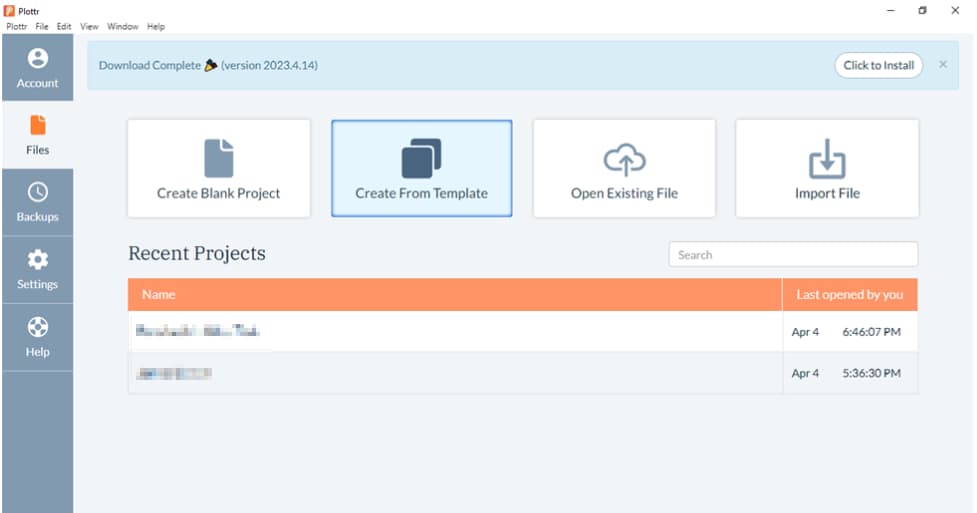
- Step 2: Scroll through the list and select Three Story Method, then click Create New Project
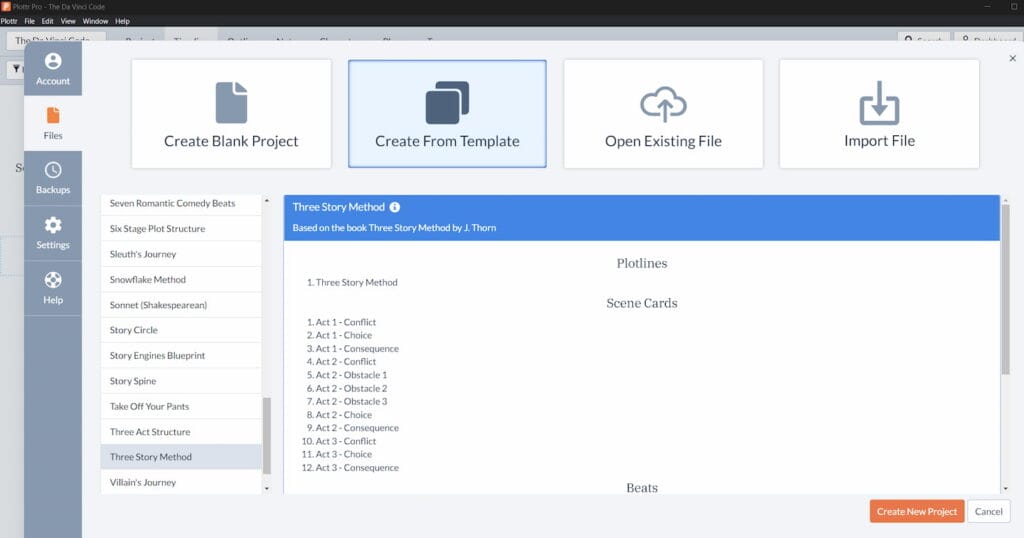
- Step 3: Give it a title and click OK; once created a Plottr file, it will stay in your list of projects so you can return at any time
- Step 4: The project will open in the Timeline view. Click on any beat’s scene card box to start adding your ideas
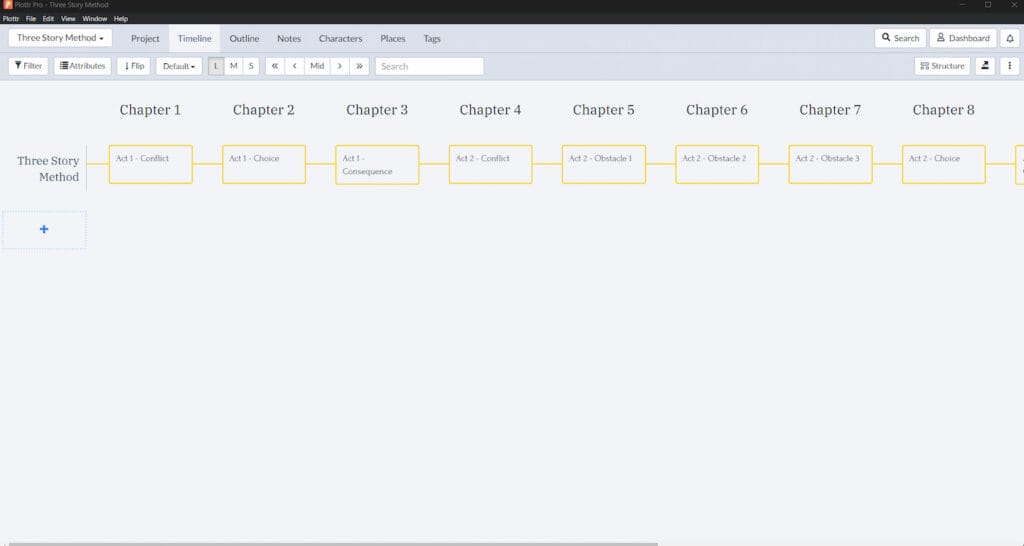
- Step 5: Once you’ve clicked a chapter or beat’s scene card, start adding your own story details above the line. The default information is there as a guide; feel free to delete it, or retain it for future browsing — whatever you prefer
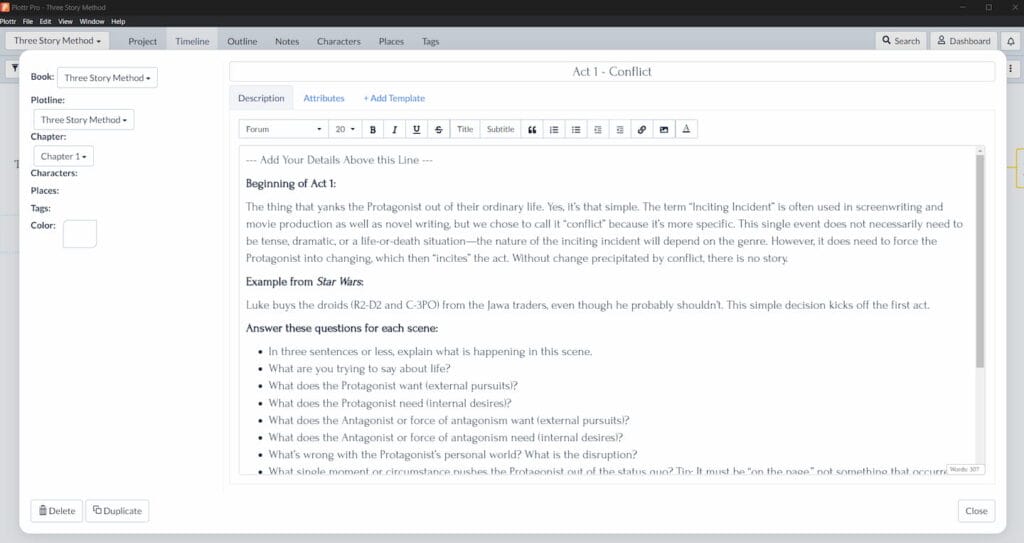
The Three Story Method template works well with other templates it Plottr that have three acts or 12 chapters or beats. Try using it with:
- Three Act Structure
- Piñeiro Screenplay Method
- 12 Step Mystery Formula
Put the Rule of Threes to Work
And that’s it! Now you’re ready to develop your own story with the Three Story Method.
Have fun with the template, and don’t forget Plottr has many others to try as well. If you don’t yet have Plottr, get a free trial to explore the templates. Be sure to leave your thoughts in the comment section below.
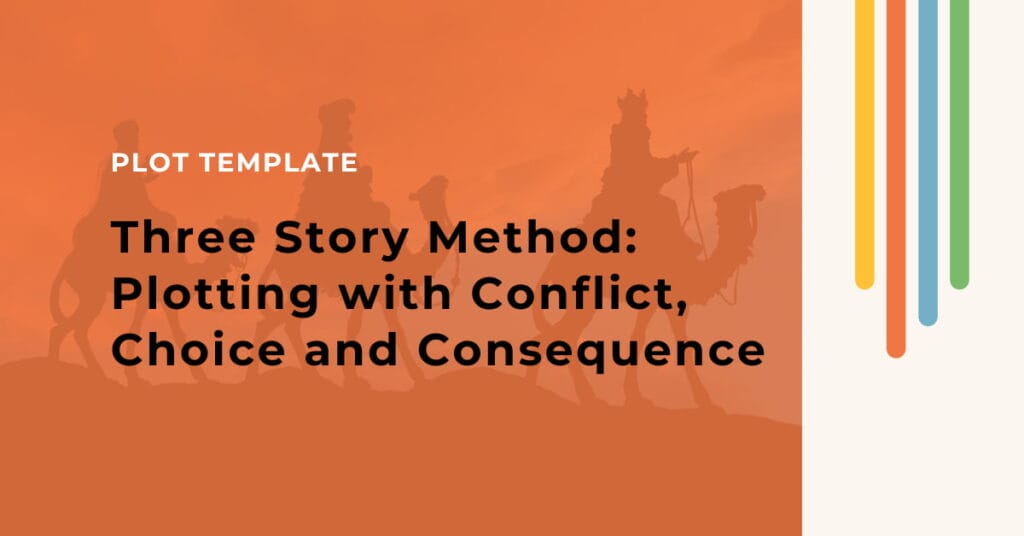
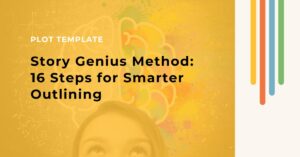
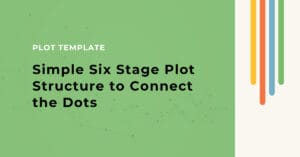
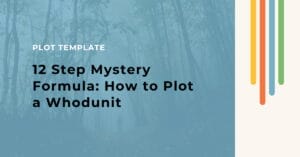




Comments